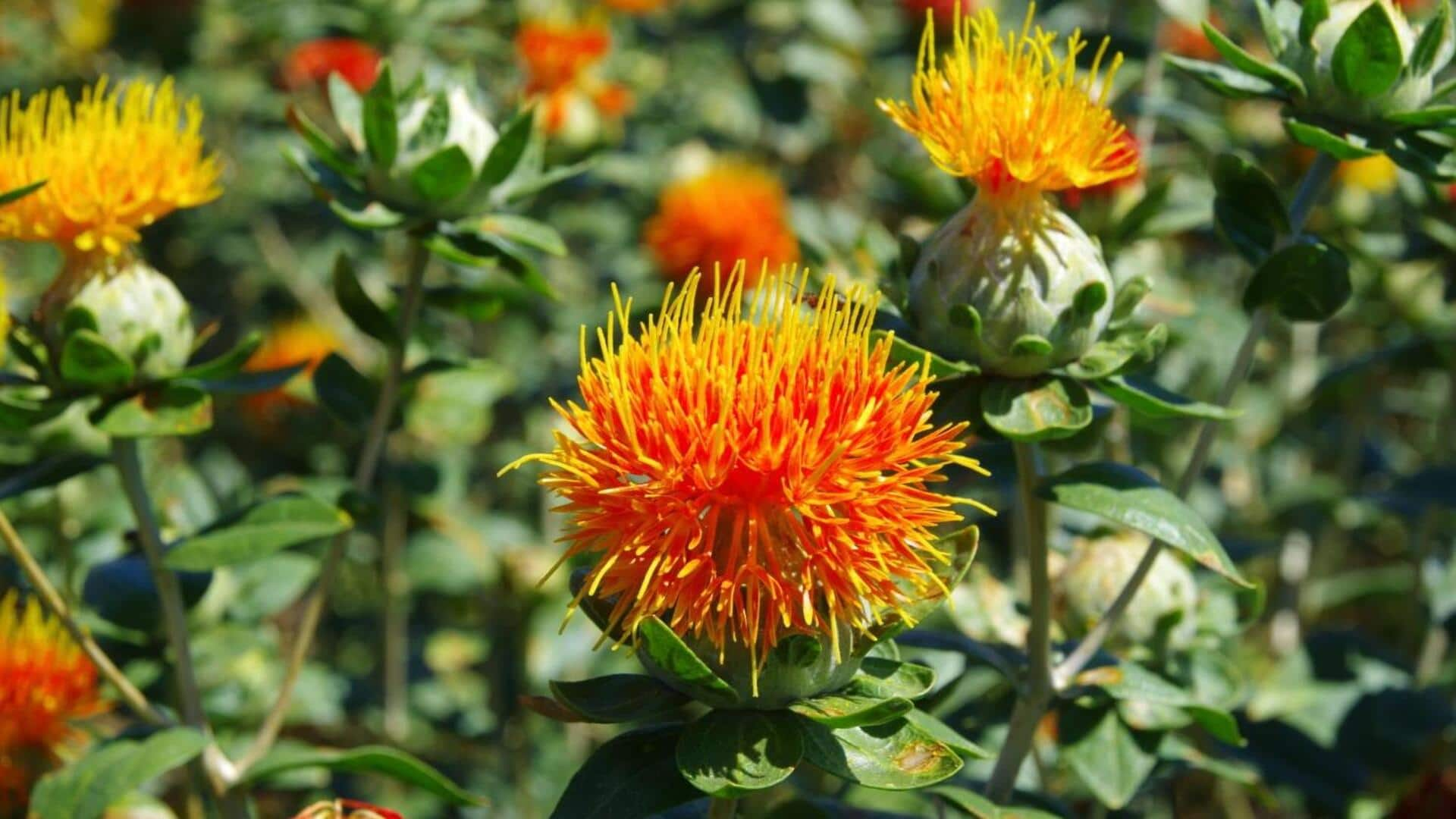
Grow delicate safflower in your home office—It's so easy!
What's the story
The simple joy of growing safflower at home, particularly in your sunny home office, can be a truly fulfilling experience. This vibrant plant, renowned for its brilliant flowers and applications in cooking and as a natural dye, necessitates particular conditions to flourish. This article offers handy tips on successfully cultivating safflower within the comfort of your home office.
Location
Selecting the right spot
Safflower plants require a minimum of six to eight hours of direct sunlight each day. Select a south-facing window in your home office that provides the most sunlight. In case of insufficient natural light, supplement it with grow lights. Maintain a distance of 12 inches between the lights and the plants, and keep the lights on for 14-16 hours daily.
Soil
Preparing the soil mix
Safflowers thrive in well-draining soil with a neutral pH ranging from six to 7.5. Combine two parts garden soil, one part sand, and one part compost to create the perfect medium. Make sure the pot has sufficient drainage holes to avoid waterlogging and root rot. This preparation will keep your safflower plants healthy by supplying essential nutrients and avoiding common problems.
Water & feed
Watering and fertilization
Water your safflower plants deeply but infrequently, allowing the soil to dry out a bit between watering. This approach keeps the roots from sitting in excessive moisture, which is more harmful than a bit of drought. Feed them with a balanced liquid fertilizer every four weeks during their active growth period. Stick to half the recommended strength. This way, you'll promote strong growth without the risk of overfeeding.
Protection
Managing pests and diseases
While safflowers are resilient, they can occasionally be infested by aphids and affected by powdery mildew. It's crucial to monitor your plants for these pests and diseases. To fight off aphids, insecticidal soap works wonders. And, to prevent fungal diseases like powdery mildew, neem oil is your best bet. These simple steps will keep your safflowers healthy, preserving their beauty and positive energy in your home office.
Harvest
Harvesting safflower blooms
Under ideal indoor growing conditions, you can anticipate safflower blooms from late summer into early fall. Harvest flowers in the early morning when they are fully open. Cut them at the base using sharp scissors or shears. Use fresh blooms to add a vibrant touch to bouquets, or dry them for later use.